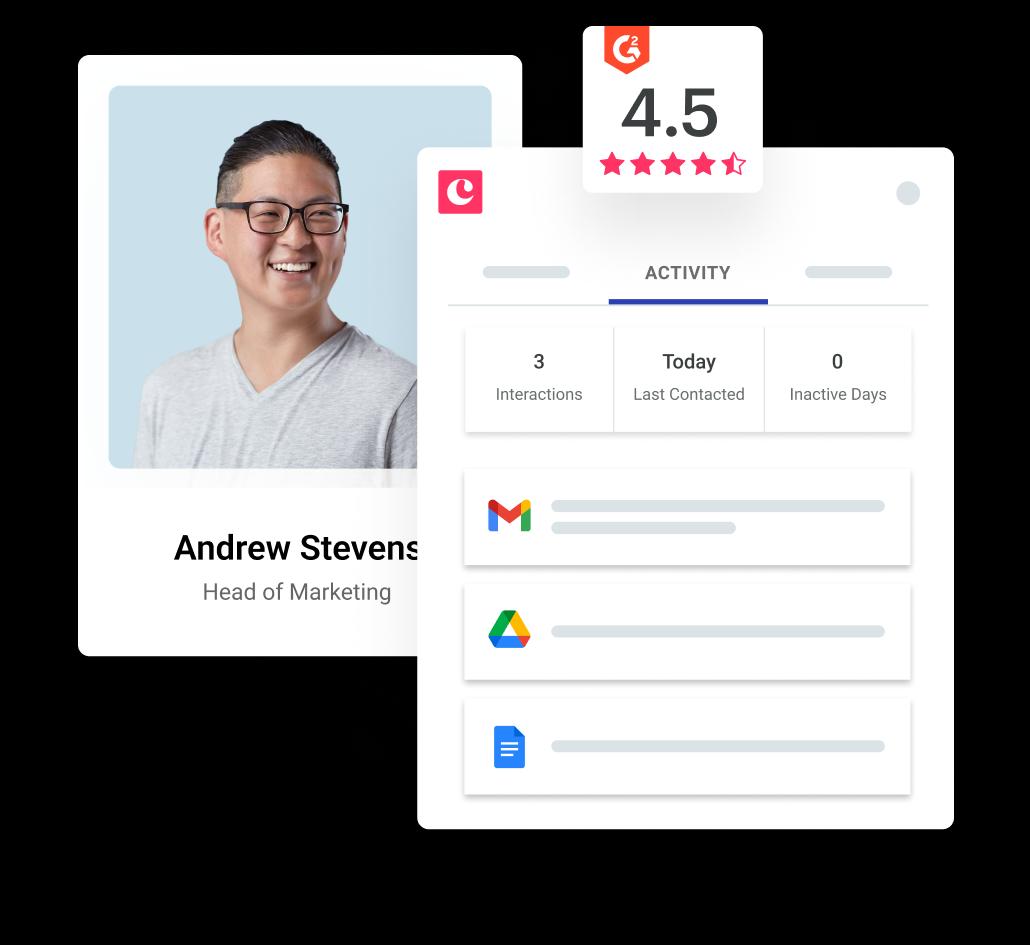
Suzanne Scacca
Contributor
Back in the 1960s, IBM introduced the BANT opportunity identity criteria. It was a system meant to provide sales reps with a simple framework for scoring and qualifying prospects.
It’s been almost 60 years since IBM developed this framework and, yet, the fundamentals still ring true, even in the age of digital marketing. Well, for the most part.
You see, goods are no longer sold only in physical form anymore. Digital goods and subscriptions have added a new layer of complexity. Which means that some of the criteria in the BANT framework isn’t as useful anymore.
Then, there’s the Internet’s effect on the sales discovery process, with many consumers feeling comfortable and confident enough to qualify themselves for a purchase without ever speaking to a salesperson first.
Because of this, the system of lead scoring with BANT (Budget - Authority - Need - Timeline) has had to undergo a change.
You may have heard of some BANT adaptations that add extra acronyms to the mix. While it’s necessary to adjust your conversations with customers in the digital era, it’s unnecessary to make the process overly complex.
What you need to do, instead, is evolve your approach to using BANT. This guide will teach you what is BANT, and show you how to do that.
What is BANT?
The consumer of today is kind of similar to a consumer from the 1960s:
They have a pain. They’re going to look outward to relieve it.
Sometimes it’s clear that their pain and their readiness to address it aligns with what you’re selling. And, other times, it’s not as clear. Which is why sales teams use the BANT framework.
When IBM originally issued the BANT system, this is what the acronym stood for:
B = Budget
Originally, the questions to score a lead on budget were simple enough:
- The product costs $X. Does that fit within your budget?
- If not, when do you anticipate your budget opening up for a purchase of this size?
It was easy enough to look at the prospect and determine if they can pay for your product right off the bat.
Of course, you wouldn’t want to discount them solely because they didn’t have the funds at the moment. It would just change the timeline of your discussion. Rather than move them into the sales pipeline, you'd follow the BANT methodology, and schedule time to follow up when they’d have the money to make something happen.
A = Authority
When BANT was brand new, it was clear who the decision-maker was. And it was usually just a single person at the top who’d decide whether or not to give the green light.
The problem salespeople ran into then, and why they needed to score a prospect’s “authority,” was that the decision-maker wasn’t always the person they were speaking to.
Lower-level employees would conduct research, sort out the specs with the reps, and then bring suggestions to the decision-maker. But these extra steps made it hard for salespeople to do their jobs well, which is why questions early on about the decision-maker were essential.
N = Need
Back in the day, the question of “Is this something you need?” might’ve made sense if you were approaching a cold prospect for sales qualification.
Even so, salespeople still had to sell prospects on an idea, explore features, and convince them it’s something they needed. By asking about their current situation and goals and trying this aspect of BANT methodology during the sales process, sales reps could determine the probability of a sale based on whether it was a must-have or nice-to-have.
T = Timeline
Back in the day, the Timeline piece could be figured out by a simple sales team question like:
“When do you think you’ll be ready to make this purchase?”
The answer helped salespeople figure out the length of the sales cycle and when they’d close the deal. The longer the timeline, the less of a rush for a sales rep to get the prospects through the pipeline.
All of the other pieces in BANT helped sales reps make these timeline estimates as well. If they know the prospect wasn’t yet in the must-have phase, for example, the timeline could be stretched.
Rather than waste your time on prospects that aren’t in a position to spend money on a solution right now, BANT helps you decide when that will be the case (if ever).
Lead scoring with BANT 2.0:
BANT ensures that you move only the most qualified sales leads into your sales pipeline. Plus, the more you use it for customer success, the better your team will get at qualifying leads.
Now, as for how you do this in the modern landscape: well, it’s a matter of changing your approach slightly to each piece of the framework.
The key difference between the old-school BANT framework and the modern-day version is that it’s no longer just quantitative. Before, you could read from a checklist of questions and definitively say:
“The prospect fulfills three of the four BANT criteria. Let’s put ‘em in the pipeline.”
Today, you have to put the qualitative piece into it and have more meaningful conversations about their goals. Here’s how you do it:
1. Budget
With many consumers discovering your products on their own and locating pricing information on your website or Google search, the qualification is no longer as simple as:
“Can you pay?”
Plus, if you’re in the business of selling digital products, these tend to be significantly cheaper, especially if the cost is spread out across the length of a subscription.
What you need to ask now are questions about the value.
For instance:
“Do you currently have something in place to help you with this problem? Why not? What’s kept you from buying it?”
“How significantly has this problem affected your organization? [Be specific: Has it slowed things down? Has it cost you money? Has it hurt your reputation? Have you fallen behind the competition?]”
“If you have a current solution, how much money do you spend on it? How has it improved [the problem]?”
“Were you aware that [current solution] charges for [extras, overages, hidden fees, etc.]? Would you prefer to have those [features, extras, guarantees] built into your contract?”
“According to our data, [our product] has the ability to improve [results] by [money or percent]. Has your business ever seen those kinds of results before?”
At the end of the day, this is about getting them to talk about their return on investment; not about how much they’re willing to spend.
2. Authority
Organizations want the people who are going to use a solution to have a say in the purchase—or else run the risk of a mutiny (and a waste of money) when employees refuse to adopt it.
To navigate this multi-level (or team-based) approach to qualifying leads based on authority, the questions must change from a simple “are you the decision-maker?” to:
“Did you have a say in purchasing [your current solution]? What was it that made you choose it over the others?”
“Who’s involved in [the process/task/event related that’s improved by your solution]? Are there any common complaints from them? If they’re doing this on a regular basis, it would be great to get their input.”
“How many departments will be affected by this change? It would be helpful speak with the heads of the departments to ensure we’ve covered each of their questions and concerns.”
“How is [key decision-maker]’s availability? Do you suspect we’ll get a quick turnaround once we’ve found the right solution for you?”
By looking around and anticipating who may need to buy in on this purchase, sales reps can assess how likely these opportunities are to go through while avoiding unnecessary delays.
3. Need
Today, it’s too easy to ask potential customers whether or not what you’re selling is something they need—most will say “yes” without giving it much thought.
That’s because inbound sales and marketing give prospects the chance to find their own solutions online and sign up for a trial or demo, or download an ebook, without first talking to someone.
In their minds, they already need your product. Now, it’s your job to probe deeper and help them see that it’s the right fit.
“When did you first notice [describe the problem, need, trigger that brought them to you]?”
“Have you tried to do this on your own? / Have you tried any other solutions besides ours? Did you run into any problems or have concerns with those options?”
“What are your company’s big goals for this year? Has the lack of a proper solution stood in the way of meeting them?”
“What are the three things you like most about [our product]? Why?”
“Do you have any questions about the [describe a feature you think would be a game changer that they might not have noticed on their own]?”
Your direct approach will get into specifics and help you see how committed they are to getting a new solution in place.
4. Timeline
The basic principles remain today. However, the way you calculate the timeline is a bit different. You can’t rely solely on the prospect to say, “We’ll make the purchase by May 1”.
As you explore the BAN, you want to know anything that might hold up the process. Like:
- The prospect says they’re waiting for the start of the next quarter and a full budget to make a purchase.
- Or maybe there were too many department heads to review and approve the purchase, and you know the red tape will hold everything up.
- Or maybe they’re not in dire straits. Without something big happening, you know they won’t pull the trigger just yet.
Then, ask them questions about other factors that may affect the timeline. For example:
“When does your contract end with [current provider]?”
“When is the latest you’d want this [new solution] in place by?”
“Do you have any upcoming [new programs/big launches/disruptive changes] that might prevent your team from getting onboarded with [new solution]?”
“How much [money/time/etc.] are you losing each day you’re without a new solution? Is there a point at which it’ll no longer be sustainable?”
Once you have a working idea of how long this sales process will take and when the contract can go live, work backwards to figure out when you should realistically get this opportunity moving through your pipeline.
Meet the new and improved BANT.
The revamped approach to BANT isn’t about overcomplicating it with additional criteria and steps. It’s really about understanding how each part of the acronym works—for the modern consumer.
Don’t forget that a lot of this change came about thanks to the web.
If it’s done right, your website and marketing strategy will already have helped many prospects qualify themselves as viable leads.
You and your sales team can then spend your time on building relationships and having meaningful conversations rather than asking basic qualifying questions.










